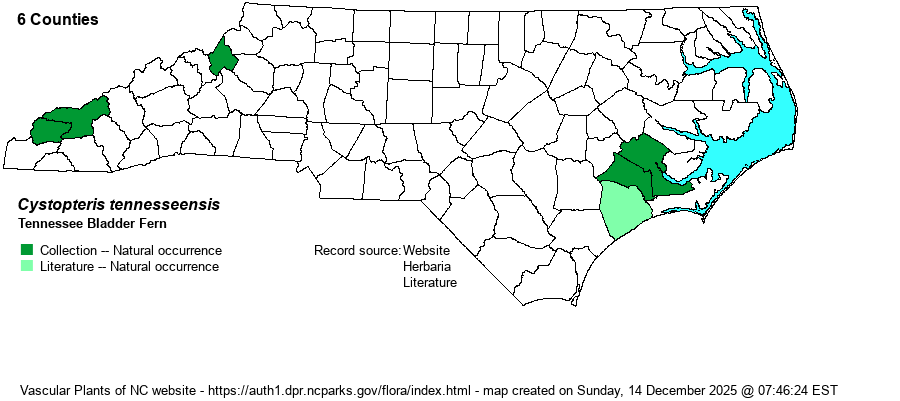| Author | Shaver | |
| Distribution | A two-part range, mainly along the central coastal area (Craven, Jones, and Onslow counties); also present in a few Mountain counties, though exact distribution there is uncertain owing to specimen identification. The website editors are not mapping specimens from Macon County owing to likely misidentification, and there is a question if the Avery County record is correct owing to habitat concerns.
This is a mainly Midwestern species, ranging from PA and southern MN, south to western VA, northern AL, and OK; but there is a disjunct coastal population in the eastern Carolinas. | |
| Abundance | Extremely rare, with NCNHP listing only one currently extant population, in Jones/Craven counties. Their database contains no records for the Mountains at all, yet Graham County (historical) is listed on their most recent Rare Plant List. Thankfully, the Jones/Craven site is a protected area and is still considered of excellent quality, but clearly this species has a precarious existence in the state. Indeed, it is a State Endangered species. | |
| Habitat | This species is limited to calcareous rock outcrops. Near the coast it is found on near vertical marl outcroppings along wooded creeks, generally where shaded and somewhat damp. In the Mountains it grows on limestone outcrops, but whether they are moist or dry is unclear. | |
| Phenology | Fruits from April to June. | |
| Identification | This Cystopteris has a slender and narrowly triangular blade shape, as in C. bulbifera but unlike the other three species, which are ovate in shape owing to the lowest pinnae shorter than the ones above them. Thus, C. tennesseensis is widest at the base, with the blade being no more than 10 inches long and only averaging about 6-8 inches long, with the stipe almost as long. Like the others in the genus, the blade is strongly dissected, being bipinnate-pinnatifid. This species has the petiole dark brown, whereas C. bulbifera has a reddish to tan petiole; that species has a longer blade, often 2-3 feet long, a much more robust species in general. Of course, on the streamside marl banks in the lower Coastal Plain, no other species is as lacy-cut as this one, and normally only the also rare Asplenium heteroresiliens grows with or near it. | |
| Taxonomic Comments | None
| |
| Other Common Name(s) | None | |
| State Rank | S1 | |
| Global Rank | G5 | |
| State Status | E | |
| US Status | | |
| USACE-agcp | | |
| USACE-emp | | |

